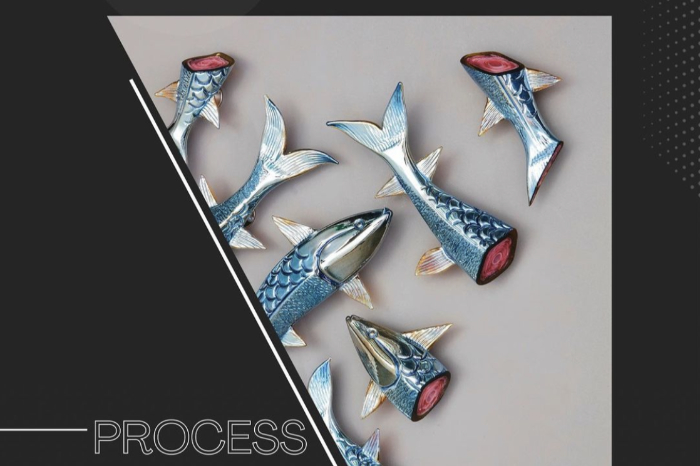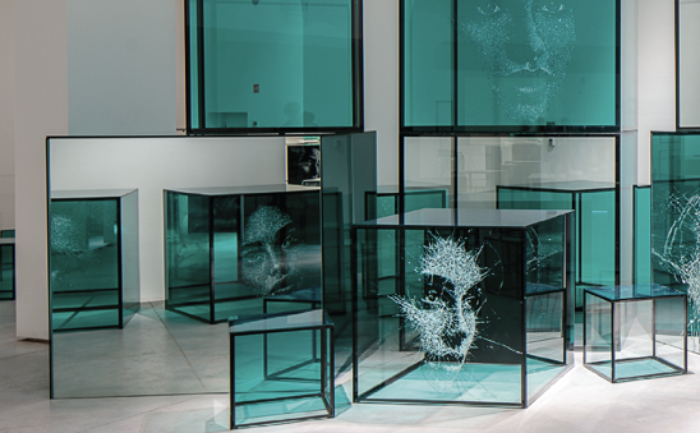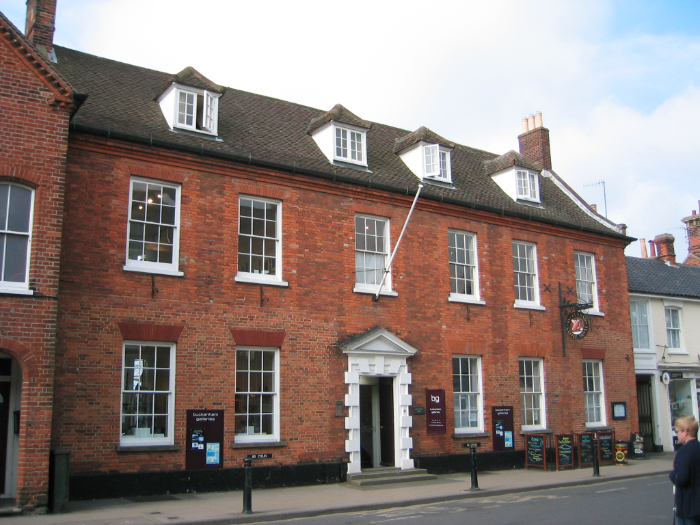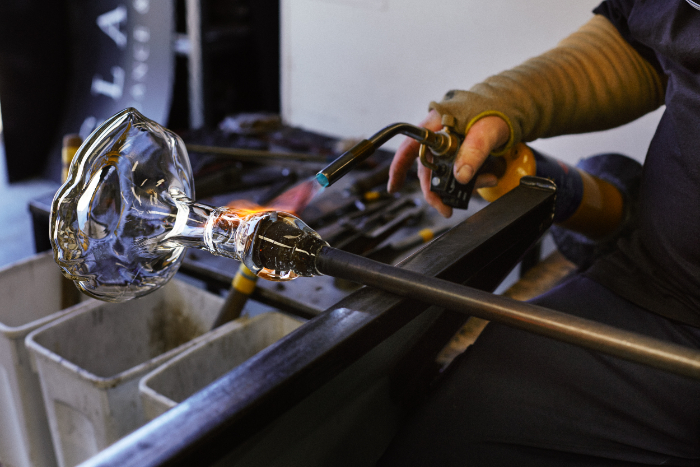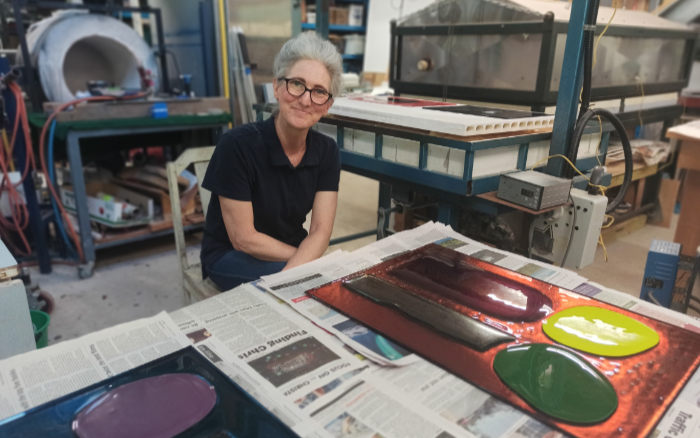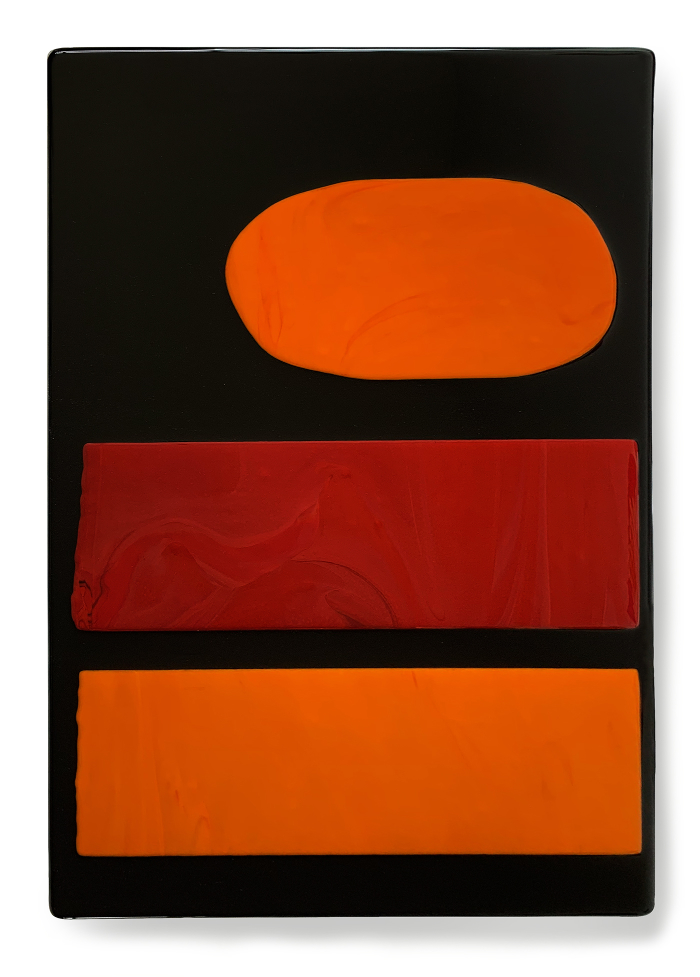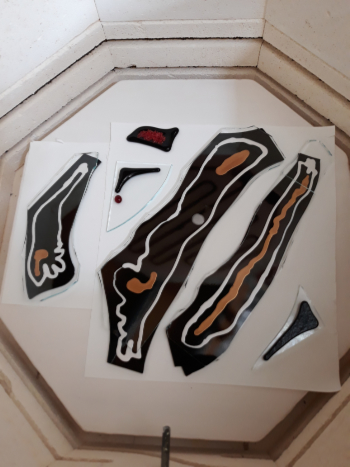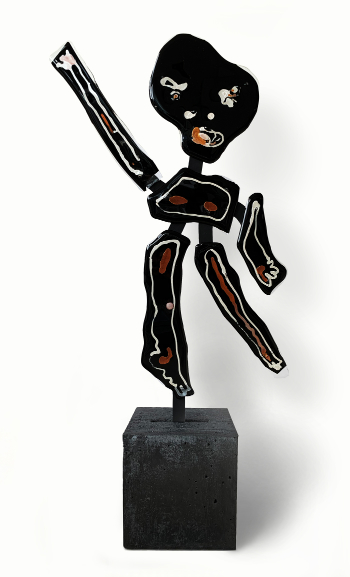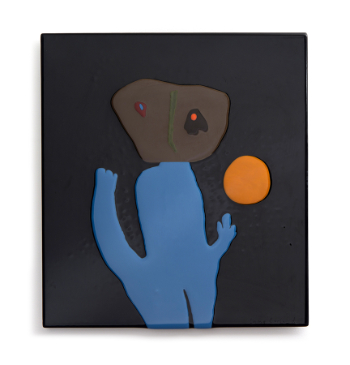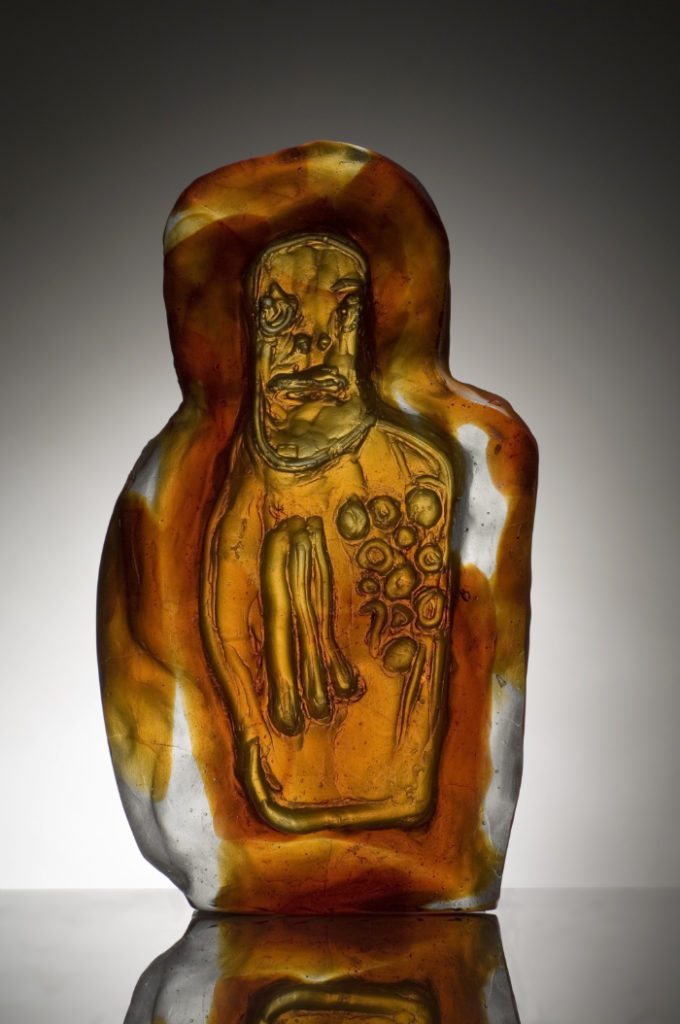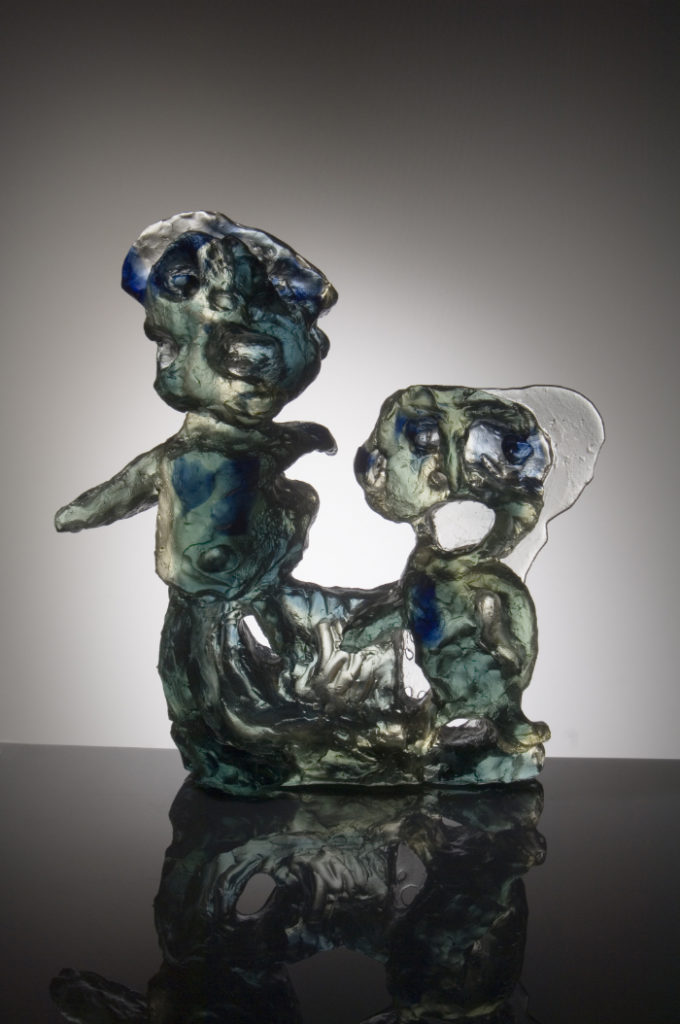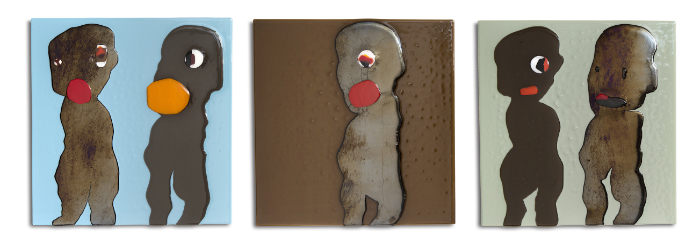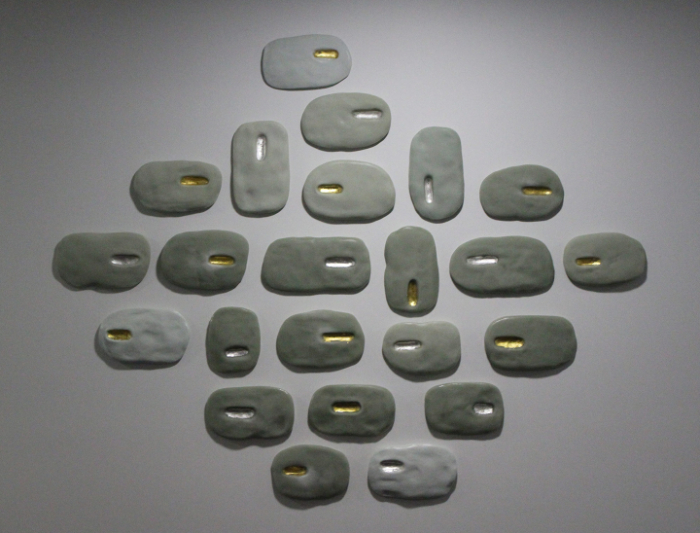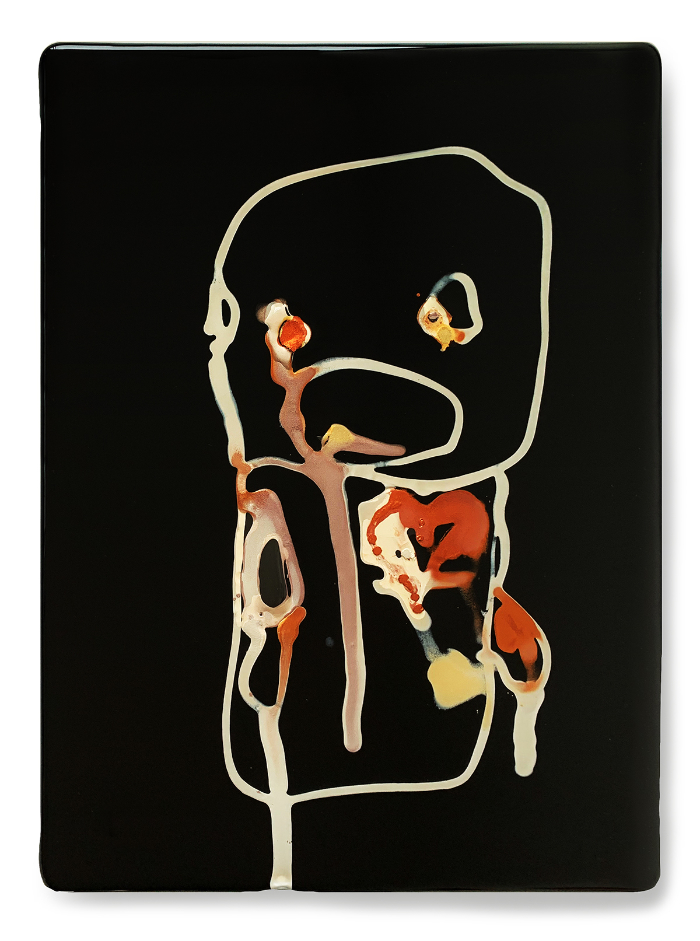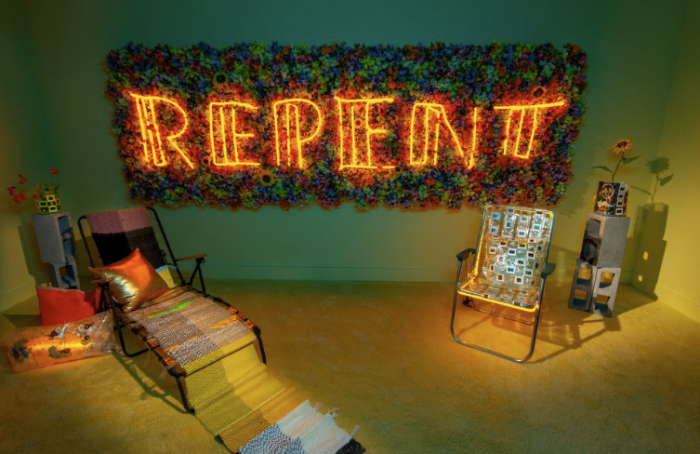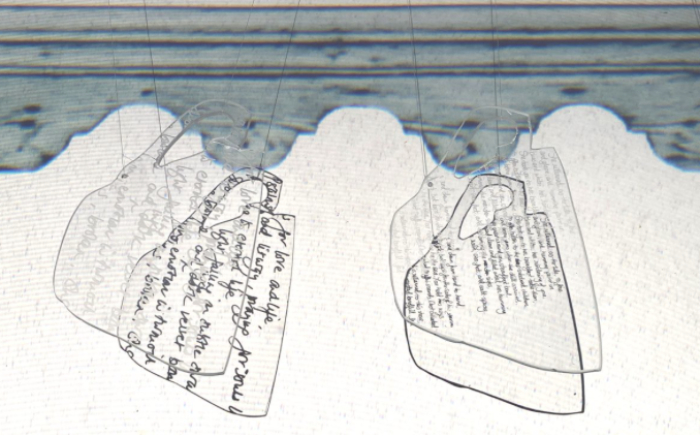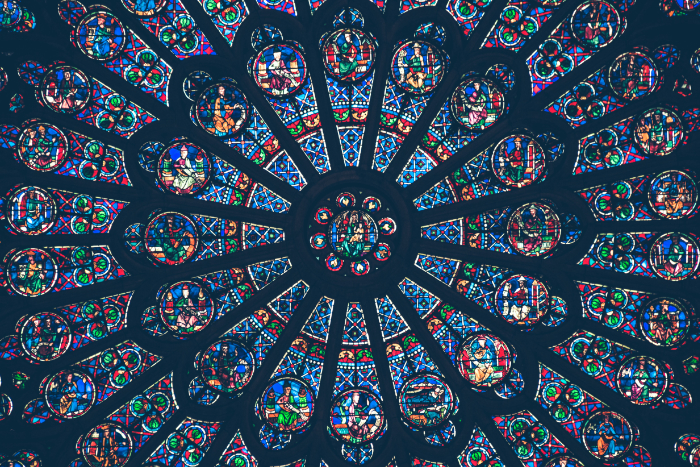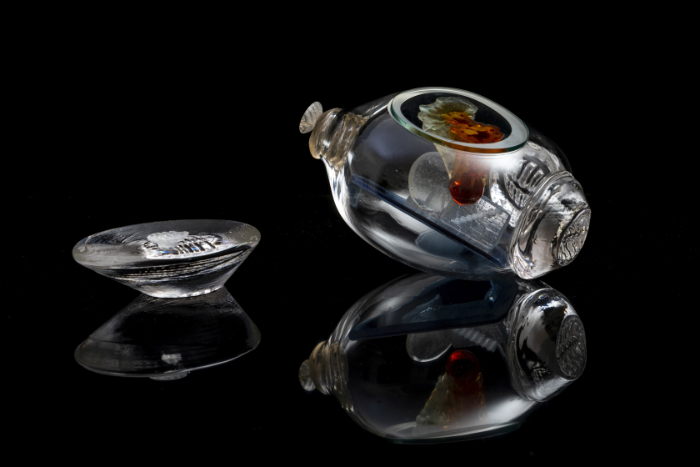
Angela Thwaites is known for her cast glass and likes to create pieces that draw the viewer in to take a second look. Her most recent work is moving smaller scale, but with no less impact. Linda Banks finds out more.
What led you to start working with glass?
Translucency, colour and light.
What glass techniques have you used and which do you prefer?
I was already working with hand-built ceramics, so it was a relatively easy step to take into kiln-forming techniques. Casting and pate de verre feel particularly empathic, as form is key to everything I make and these techniques offer the greatest range of formal possibilities with glass.
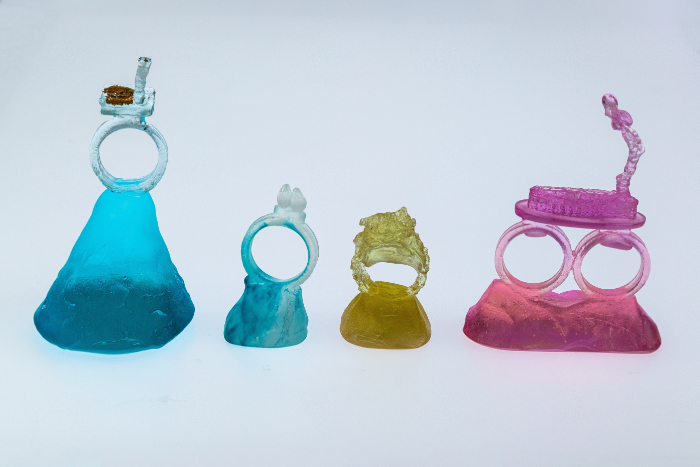
What is your creative approach? Do you draw your ideas out or dive straight in with the materials?
All of these plus more! I was taught in a very linear way, so some of that is there as a basis, but, the more you make, the more you can dive in and go. I don’t usually following a linear path now, so I might take a mould from a found object or a little clay or plasticine model I’ve made. I use all and any materials to rough out an idea.
I love drawing, too, in its own right. I draw before and after, so I can scope out what needs developing further.
I’m also working digitally to model shapes for 3D printing. Digital technology gives options that wouldn’t be possible to make by hand alone.
I draw on paper before I start with the 3D software, so I have a sense of where I’m going with it. I don’t think in numbers, so I don’t work mathematically. I use the Rhino construction plane like an on-screen sketchbook page and then choose one or two of the models I’ve created to work up for 3D printing before casting in glass.
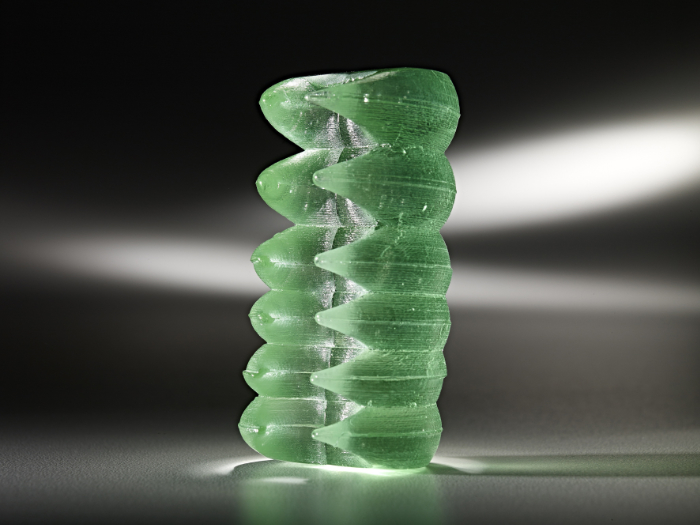
What inspires your work?
Everyday things and experiences, odd, humorous and awkward things, as well as pleasing shapes. Something I see out of the corner of my eye, which could be a building or something growing or discarded. Something I read or hear, fragments, shadows patterns, movements – more or less anything inspires me.
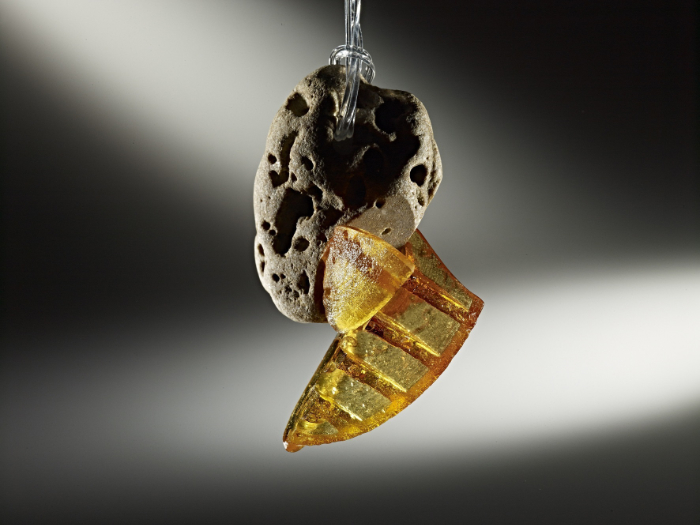
What message(s) do you want to convey through your art?
Look! Look again!
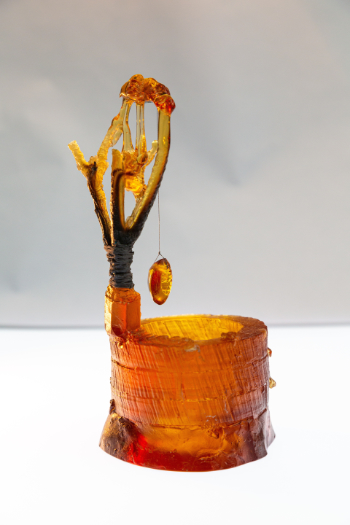
What is your favourite tool or piece of equipment and why?
My hands. They’re an amazing piece of engineering, so flexible and multipurpose.
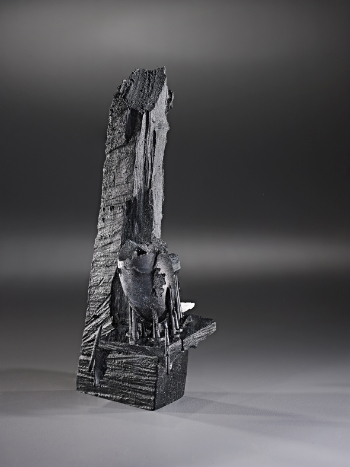
Do you have a favourite piece you have made? Why is it your favourite?
I have a couple of favourites. One is from my student days, it’s a bit damaged but still holds good and embodies most of the qualities I still hold dear: mass and space, tonal variation in colour. It’s become a kind of talisman.
Where do you show and sell your work?
I show in a range of different contexts. I’ve had work in a couple of the CGS exhibitions in the last year, plus I’m a member of the Contemporary Applied Arts (CAA) in London, A small group of pieces is on its way back from a museum in the US. I also take part in artist-curated and organised exhibitions.
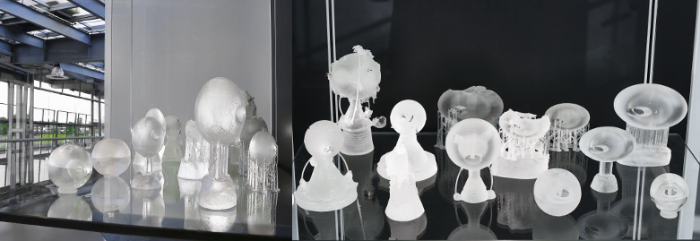
You also share your knowledge through teaching. What advice would you give to someone starting out on a career in glass?
It may well not be a quick fix but if it’s what you want then keep going and you will get where you want to be, eventually.
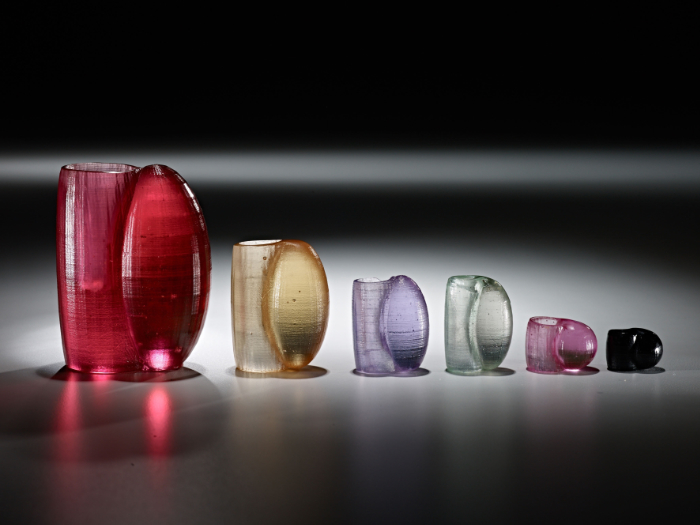
Do you have a career highlight?
Yes – but there’s still time for more! Being selected for ‘New Glass Now!’ at the Corning Museum of Glass in the US in 2019 was a biggy for me.

Where is your glass practice heading next?
Going forward, I’ll be involved in more collaborations and working across a broader range of media.
Is the global energy crisis affecting your practice?
Of course, it must, otherwise nothing will change. I’m working much smaller – ‘miniature monumental’, as I describe it. I am taking a thoughtful approach, reusing as much material and resource as possible, from glass to yogurt pots to rain water.
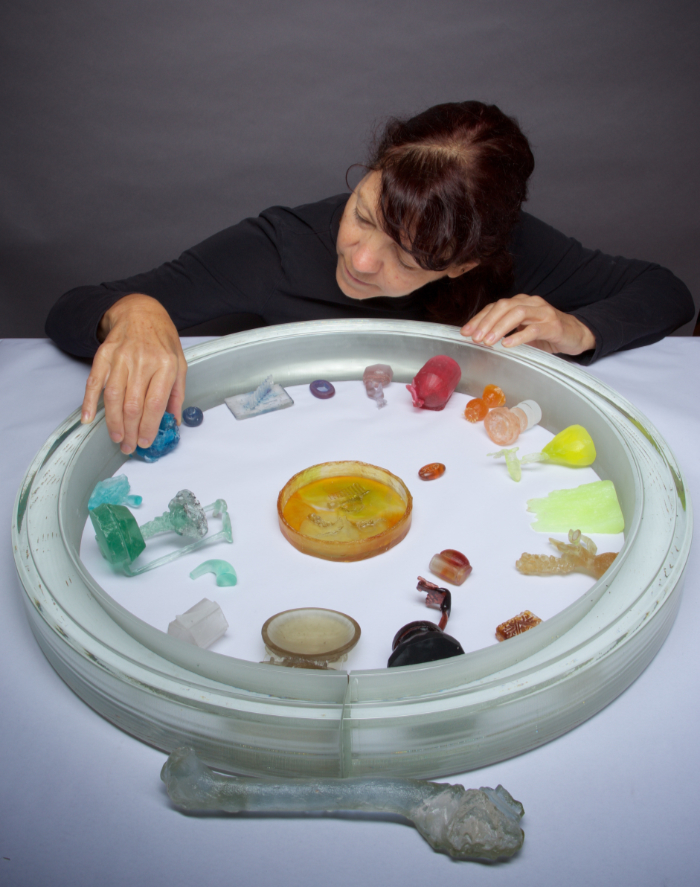
About the artist
Based in South London, Angela Thwaites’ practice explores glass through making, writing, education and research.
International exhibitions include ‘New Glass Now!’ (2019) in the US, ‘NGC21’ (2019) at the National Glass Centre, Sunderland, UK; ‘British Glass Biennale’ (2017), Stourbridge, UK, and ‘Hsinchu City International Glass Festival’ (2014), Taiwan.
Publications include ‘Mixing With The Best’ (Royal College of Art, 2002) and ‘Mould Making for Glass’ (Bloomsbury, 2011).
Find out more about Angela via her website or follow her on Instagram: @angelamthwaites
Main feature image: ‘Always Coming Home’ by Angela Thwaites. Photo: D Williamson.
